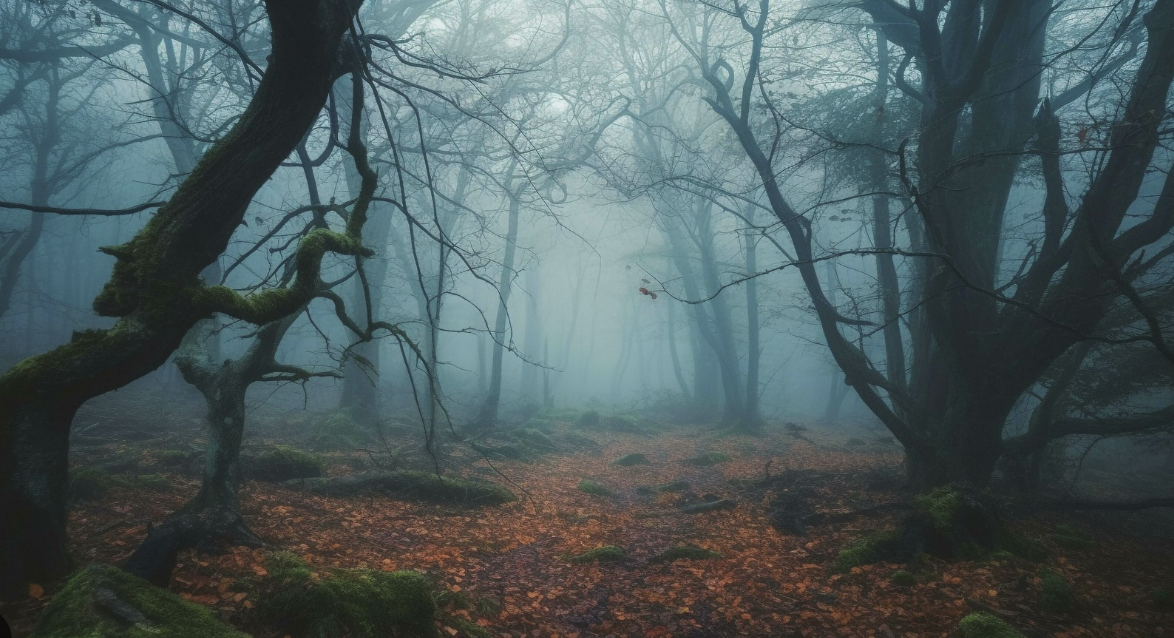
Mysterious Stories Blog
Strange, disturbing and mysterious stories from the outdoors
The strange disappearance of Douglas Legg from the Adirondack Mountains
Douglas Legg, disappeared July 10, 1971, Santanoni Estate, Newcomb, Adirondack Mountains, NY State
Revised July 2024
On July 10, 1971, Douglas Legg, 8, disappeared while hiking on the Santanoni Estate near Newcomb in the Adirondack Mountains and was never seen again.
What is the Santanoni Preserve?
Santanoni Preserve, previously Estate, was established by Robert C. Pruyn (1847–1934), a prominent Albany banker and businessman. The so-called "Great Camps" were popular among wealthy industrialists in New York as summer retreats with beautiful mountains, cooler temperatures, and fresh air. Acquiring about 12,900 acres (52.2 km²) in the Town of Newcomb, just south of the Adirondack High Peaks, Pruyn employed the renowned architect Robert H. Robertson (1849–1914) to design a summer residential complex.
It had 40 buildings, a 24-room main lodge, and a model farm. Robert C. Pruyn's heirs sold the estate to the Melvin family, Myron Melvin Sr., Myron, and his brother Crandall of Syracuse in 1953.
For twenty years, the Melvins and their extended family used it for their summer vacations. Douglas' mother, Mae Melvin Legg, was the daughter of Myron Melvin, who, along with his brother, established the prestigious Syracuse law firm of Melvin and Melvin.
Santanoni is located in remote Essex County, New York, and is surrounded by forests, lakes, and wilderness. The area has many wetlands, including swamps, marshes (wetlands with stagnant water), and bogs.
Douglas Legg was a grandchild of the owners of the estate. The Melvin and extended families had gathered together for one last vacation at their backcountry retreat before it was due to be sold.
Dougie Legg’s hike around the Santanoni property
Doug or Dougie, as he was known, 4’6”, weighing 76 pounds, was a keen hiker and “mini woodsman” despite his young age.
On Saturday afternoon, July 10, 1971, Dougie and his uncle set out on a hike around the Santanoni property. His uncle noted poison ivy on the trails and told a reluctant Doug to return to the lodge to change from shorts to long pants, a walk of around half a mile. He passed his older brother and cousin about 50-60 yards from the main lodge building. He failed to return to his uncle and was never seen again.
The search
That evening, as the temperature dropped, the family called the State Police, and locals from the town searched for the body throughout the night in the local area, including Newcomb Lake. The next day, forest rangers started a formal search using dogs. Helicopters were deployed, and the U.S. Air Force base in Plattsburgh sent planes equipped with heat-detecting infra-red FLIR. At the height of the search, close to 1000 volunteers were scouring the area.
The wilderness terrain, with swamps and bogs, dense forest, and fallen trees, made the search more dangerous and difficult. It was also hampered by the lack of coordination, with no one officially in charge. During the S&R effort, the weather deteriorated, with heavy rain and temperatures falling to around 40 degrees, adding to the dangers for Dougie and the searchers.
A bloodhound found a scent, but it was lost at the edge of a swampy pond, which was later drained and dragged. Nothing was found. Then, sneaker tracks were found about two miles away at Ward Pond on the fifth day of the search, but the rain had washed away any chance of dogs picking up a scent.
A week after Dougie disappeared, the family hired an elite search team of over twenty mountain men from the California Sierra Madre Mountains. Again, no luck.
After six weeks, the State Police called off the search.
What happened to Dougie Legg?
In 1993, a woman claimed that Dougie had been kidnapped and killed by her relative, and his body dumped into a lake in Lewis County. Officials searched the dry lake bed, only to learn that the woman was a psychiatric patient suffering from false memory syndrome. Around the same time, a man came forward to report to officials that he had come across a small skull and partial skeleton in 1973, which he believed to be human.
He and a friend were hunting and became separated as he chased a deer across a peninsula leading to a 21-acre island in Newcomb Lake, approximately 1/2 mile from the lodge. He didn’t report it in 1973, he said, because they did not know about the case at the time, and he had been on leave from the Navy for four days and was not where he was supposed to be. He later reported it when his friend heard about the renewed search for Dougie based on the woman’s false story. The man traveled from his home in Montana to show investigators the area where he found the remains, but unfortunately, they found nothing. The remains would now be tobacco-colored and buried under inches of sediment and moss. Since only a general location could be given, authorities only searched the most likely area, a 50 x 50 yard area.
The story fits with the last known sighting of Dougie, who was possibly attempting to follow his uncle around Newcomb Lake. Police had the theory that attempting to follow his uncle, he walked across the peninsula and, thinking he was still following the lake shoreline, became disoriented and lost on the island. The island was searched at the time of the disappearance, but it was hampered due to the dense vegetation in the area.
If Dougie had not become lost, he may have fallen to foul play or run off of his own accord and then drowned in a bog or swamp.
Aftermath of the disappearance
The family, not wanting to return to the scene of the tragedy, quickly contracted with the newly formed Adirondack Conservancy Committee of The Nature Conservancy to purchase the entire Santanoni Preserve. The furnishings were removed, and the Conservancy then resold the property to the state of New York for incorporation into the State Forest Preserve.
For two decades, Camp Santanoni buildings were inadequately maintained by the state since the intent, as required by Article Fourteen of the New York State Constitution (providing for the retention of Adirondack wilderness), was to remove improvements to return the Santanoni Preserve to a "forever wild' condition.
Today, Santanoni Preserve has been restored to its former glory and is designated a National Historic Landmark. Access to the buildings from the closest road requires a five-mile hike. The main lodge and most of the outbuildings were renovated by Adirondack Architectural Heritage under the administration of the NYDEC and its preservation officers.
Exclusive articles for members of StrangeOutdoors that are not available elsewhere on the site.
See the latest Exclusive members-only articles on StrangeOutdoors.com
Read other strange stories from New York
The Strange disappearance of Steven Paul Thomas from Mount Marcy
The Very Strange disappearance of Tom Messick whilst hunting near Brant Lake
The death of Ronald DeFeo - The Amityville Horror Killer
Sources
http://www.suncommunitynews.com/articles/ncl-magazine/tragedy-at-santanoni/
http://www.nytimes.com/1971/07/22/archives/400-searching-for-boy-lost-in-adirondacks.html
http://poststar.com/news/local/years-later-case-of-missing-boy-remains-an-adirondacks-mystery/article_8a42bf94-af20-11e0-835c-001cc4c03286.html
https://www.tapatalk.com/groups/missing87975/santanoni-s-sad-legacy-the-disappearance-of-dougla-t1202.html
Santanoni: From Japanese Temple to Life at an Adirondack Great Camp by Robert Engel, Howard Kirschenbaum, and Paul Malo, July 2001.




